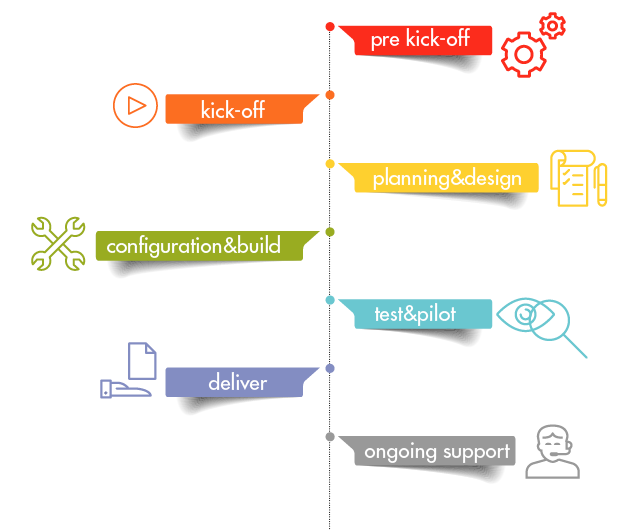How to Transition From Your Old, Outdated IWMS Software


Updating your Integrated Workplace Management System (IWMS) cannot only be expensive, but downright scary. Fear of lost data, lost productivity due to downtime, and the blowback from employees who don’t deal well with change are just a few of your concerns. The reality is, sticking with your old, out-dated system costs significantly more than if all your fears came true. While you’re allowing the fear of the unknown to hold you back from a more efficient, streamlined management system, your competitors are taking the plunge and out-pacing you in the move to get ahead. The time to upgrade is now.
Treat it Like You’re Moving into a New Office
Making a move to a new facilities management tool is a lot like moving to a new office and should be treated as so. As a result, early and often communication is the key to success. You need to get yourself  and your workforce into the “moving” frame of mind and take similar steps throughout the transition process.
and your workforce into the “moving” frame of mind and take similar steps throughout the transition process.
Use this time to reflect on what changes you want to occur. Which of the organization’s current methods are working and which need improvement? Many companies are realizing the power of data and how they can use it to learn from the past, forecast the future, and make adjustments accordingly. What data is important to you and how is it currently being delivered (or not)? What are the company’s short and long-term goals? Mapping out a business plan will aid you in identifying what solution best fits organizational needs both now, and moving forward. Now, you’re ready to start the process.
1. Identify what solutions are available to you. Do your research – find out what options are available and which systems your industry peers are using. Look into the history of each vendor and review case studies. This will help you narrow down your choices and hopefully help you feel a little less fearful about the future. After all, these other companies found great return on their investments, right?
2. What value are you looking for in both the system and vendor support? The implementation process does not stop once the IWMS software is installed. You will need migration consulting, employee training, and long-term technical support. If you are having trouble in the evaluation process, download our ebook 8 Practical Guidelines to Evaluating Facilities Management Software for an in-depth look at all you should be considering.
3. It’s time to move! Once you have thoroughly evaluated and identified what software system (and vendor) most closely fits with your organization’s needs, it’s time to make your move. Part of being a FM leader is trusting in your processes and decisions. There’s no time to look back; only move forward.
Moving Is the Perfect Time for Spring-Cleaning
Once you’ve made your decision, it’s time to do a little spring-cleaning. Review your list of vendors and outside technicians, locate and catalog all assets and equipment, and review your database of historical work orders and equipment history to identify what should stay and what should be thrown out. After all, the whole point of making this transition is to improve on your existing processes and throw out any bad habits, right? Once you have cleaned out the “closet,” make sure you have an organized catalog of all assets, equipment, vendors/technicians, and space.
It’s Time for Migration and Implementation

If you were thorough throughout the planning and preparation stages, you’ve aligned yourself with a software vendor who will guide you through the migration and implementation process. This is where they have an opportunity to prove their value.
The implementation process should go something like this:
- Pre-Kick Off- This is when the transition goals are reviewed and validated with you and the vendor’s lead Implementer and the team members from both the vendor and your organization are clearly defined.
- Kick-Off- The kick-off includes all team members from both parties regardless of the role they play. It is important for the entire team to understand milestones and at what point they are expected to participate. During the kick-off, the implementation schedule is confirmed and next steps for system design are defined.
- Plan & Design- At this point, a thorough review of current workflow processes are analyzed and the workflow is defined for use of the new system.
- Configure & Build- It’s time to put your processes and the vendors recommendations together and build the site.
- Test & Pilot- The configuration of the new system is reviewed and validated to ensure goals and objectives are met. The system is not live, so now is your opportunity to have your questions answered before the go live date.
- Deliver- Your new IWMS software system is live- You have officially moved into your new home and you have been involved from the beginning so you are already trained and ready to use your new tool.
- Ongoing Support- If you aligned yourself with the right vendor, they will offer ongoing support, regularly check in with you, and update the software system as new technology becomes available.
Questions to Ask to Find the Best IWMS Software
- How Well Does It Integrate With Our Existing Software?
- How Often Do We Need to Make Upgrades?
- What Facility Management Metrics Does it Track?
- How Does the Pricing Model Work?
- What’s Involved In Implementing Your IWMS Software?
- Does It Have Mobile Apps Available For Employees?
- Can We See Detailed Views of our Floor Plan?
- How Easy Is It For Users To Learn the Software?
We understand how tedious and scary transitioning from one IWMS software system to another can be. As the facilities manager, you are used to dealing with the unknown and planning projects down to the last detail- this project is no different. Gain support from upper management, as well as your workforce, by enlisting their involvement in the beginning stages. By asking for participation from the start, you not only ensure no stone is left unturned, you empower them, giving them an invested interest in the project’s overall success.
